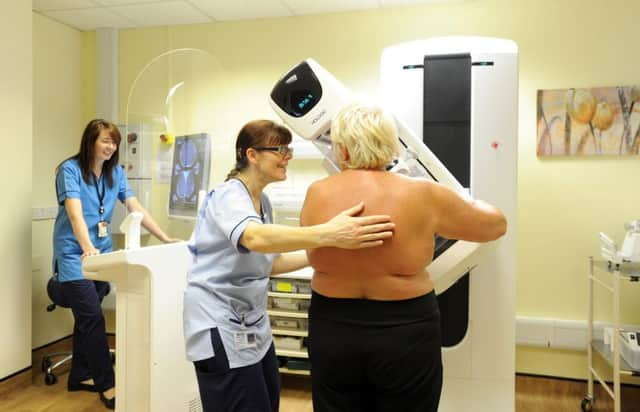Breast screening rates in Scotland fall to lowest in decade


Official NHS data revealed that a third of eligible women snubbed routine breast x-rays between 2012 and 2015 - Scotland’s worst figures since 2004.
Every woman aged between 50 and 70 is invited for a mammogram every three years, with the service detecting 1,300 cases last year.
Advertisement
Hide AdAdvertisement
Hide AdScreening has attracted controversy as some experts have claimed it only offers modest benefits to patients.
However supporters say the process can detect cancers at an earlier stage so treatment is more likely to be successful.
Mary Allison, Scotland director at Breast Cancer Now, said: “Breast screening saves lives. It can help detect breast cancer at its earliest stages, which increases chances of survival.”
She called for more action to tackle inequalities, as low uptake has been linked to deprivation with just 61 per cent of women in poorer areas going for a mammogram, compared to 80.4 per cent among their most affluent peers.
NHS Greater Glasgow and Clyde, Lanarkshire and Lothian all failed to meet the national 70 per cent performance target.
Her call was backed by Scottish Labour Equalities spokesperson Jenny Marra who said: “Too often in Scotland where you are from and how much you earn determines how likely to are to be diagnosed with, and survive, cancer.”
NHS Greater Glasgow and Clyde has sent specialist workers to target communities with low uptake, as well as sending mobile screening units out to make it easier for people to attend screening.
A spokesperson said: “We recognise that there has been a decrease in the number of women attending breast screening appointments and we would urge all women who are invited to consider the opportunity to have a screening test.”
Advertisement
Hide AdAdvertisement
Hide AdAn SNP spokesperson: “Scotland’s Breast Screening Programme is an enormously important service, which detected over 1,300 cases of breast cancer in 2014/15 – around half of which were invasive and less than 15mm in size, and so unlikely to be detected by physical examination.
“For the three year period up to 2015 the uptake rate exceeded our 70 per cent minimum performance standard – although we would encourage all eligible women to take up the offer of screening, which has been shown to increase the chances of early detection.”